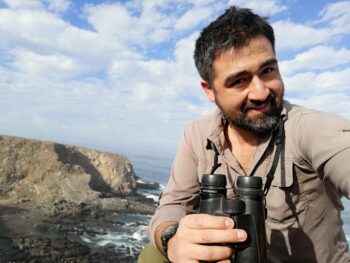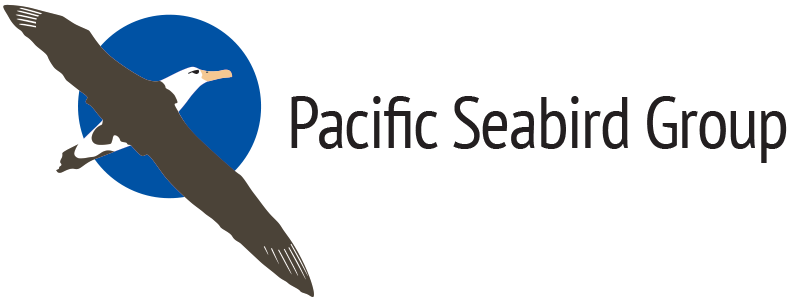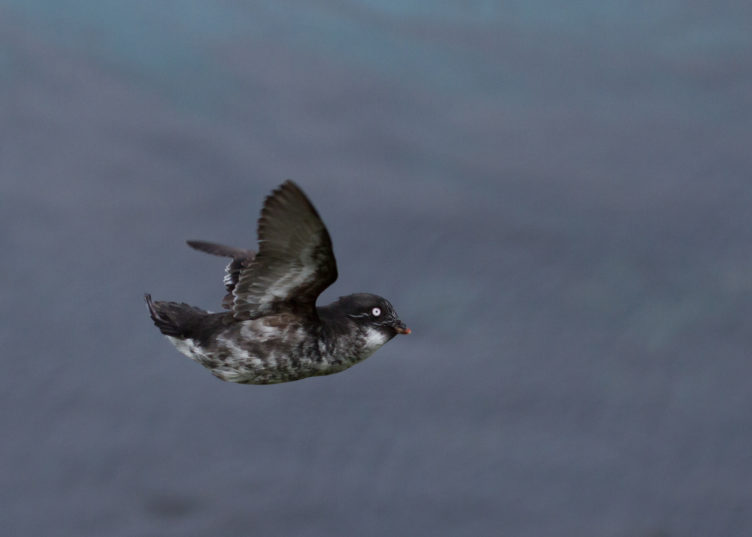Interview with an Early Career Scientist
[vc_row][vc_column width=”3/4″][vc_column_text]
Featuring Rodrigo Silva

Q: Tell us a little about your life and work.
A: I am a veterinarian by profession and I have a MSc in Wilderness Conservation. I live in the countryside near Santiago, Chile with my wife and 2 daughters. I’m very involved in the NGO Red de Observadores de Aves y Vida Silvestre de Chile (ROC – The Network of Chilean Birders) where I serve as Coordinator of the Seabird Program. This program encompasses our research and conservation actions related to storm-petrels along with other threatened seabirds such as the Peruvian Tern (Sternula lorata), Grey Gull (Leucophaeus modestus), and Peruvian Diving Petrel (Pelecanoides garnotii).
Q: What drew you to seabirds?
A: I was drawn to them because of several conservation challenges here in Chile related to seabirds. Essentially, we have a huge problem with light pollution and storm-petrels in the northern region of the country as well as a lack of protection of breeding grounds for these seabirds and other threatened species. There is so much to discover, even basic aspects of natural history are unknown.
Q: What projects keep you busy throughout the year?
A: Most of my work is related to the Atacama Storm-petrels Project, that I’ve been involved with for about seven years. When we started this project, we were focused on natural history of these storm-petrel species (Markham’s, Hornbyi’s, Elliot’s, and Wedge-rumped), basically searching for their breeding colonies in Atacama desert—the most arid desert in the world—and mapping the threats facing these colonies. Now, although we are still searching for new colonies and exploring the desert, we are focused on two major objectives: promotion of clear skies (to address light pollution issues), and promotion of protected areas for storm-petrel breeding colonies.
Q: So, you started out as a veterinarian? What happened during your master’s that prompted you to become more interested in conservation?
A: The more honest answer is that I became a veterinarian because I had an interest in animals. However, I didn’t realize that there were several options for working on animal conservation or environmental issues. I just thought “animals” and decided to become a veterinarian—but I didn’t realize that there were so many other options. So, I switched to this new profession—which I think that I am much more capable of than being a veterinarian.
Q: What’s the best part about your job?
A: We are discovering things which were absolutely unknown up to now, which is very exciting. Books used to report that we didn’t know where these species were breeding—and now, we are finding out those unknowns. Also, we are advancing conservation. Although it is challenging, when you get some success, it feels great.
Q: How did you hear about the Pacific Seabird Group (PSG)? What does PSG mean to you? How have you benefited from PSG?
A: I joined and we, at ROC, received a grant through the Craig S. Harrison Conservation Fund. But more than that, something great about PSG is that you feel that you belong to something, a larger group of people with similar interests. Moreover, seabirds face similar threats in different territories—like light pollution, which has been addressed in Hawaii—so something great about PSG is that you can get in touch with people who have already addressed these challenges in other parts of the world.
Q: There’s probably a bunch of people reading this wanting to be just like you—what questions remain for the next generation of seabird researchers?
A: In Santiago, located 100 km from the Pacific Ocean, we experience fallout of Fueguian Storm-petrels (Oceanites oceanicus chilensis) every year, probably reflecting breeding somewhere in the Andes. Down in the Puerto Montt area, no nests of the recently described Pincoya Storm-petrel (Oceanites pincoyae) have been found. Something similar occurs with Common and Magellanic Diving-petrels (Pelecanoides magellani) and possibly the same with (Puffinus assimilis).
Q: What do you think are some of the toughest barriers you see in terms of young researchers and students entering the field of seabird conservation? How have you overcome these barriers—and what do you recommend for ECSs?
A: Here in South America, I would say that one of the main challenges is to get funding to do research and conservation of seabirds. What has been key for us in solving this issue has been to get in touch with the international community, which includes groups like the Pacific Seabird Group (PSG). If you are by yourself in one of these remote places in which research and conservation are not prioritized, you will not get enough resources to be successful. So, it’s very important to get in touch and get involved with larger organizations.
Q: Last question: favorite seabird species?
A: Hornbyi’s storm-petrel (Oceanodroma hornbyi).[/vc_column_text][/vc_column][vc_column width=”1/4″][vc_btn title=”Return to Early Career Scientists »” color=”blue” align=”center” link=”url:http%3A%2F%2Fpacificseabirdgroup.org%2Fstudents-and-careers%2Fearly-career-scientists%2F|||”][/vc_column][/vc_row]






